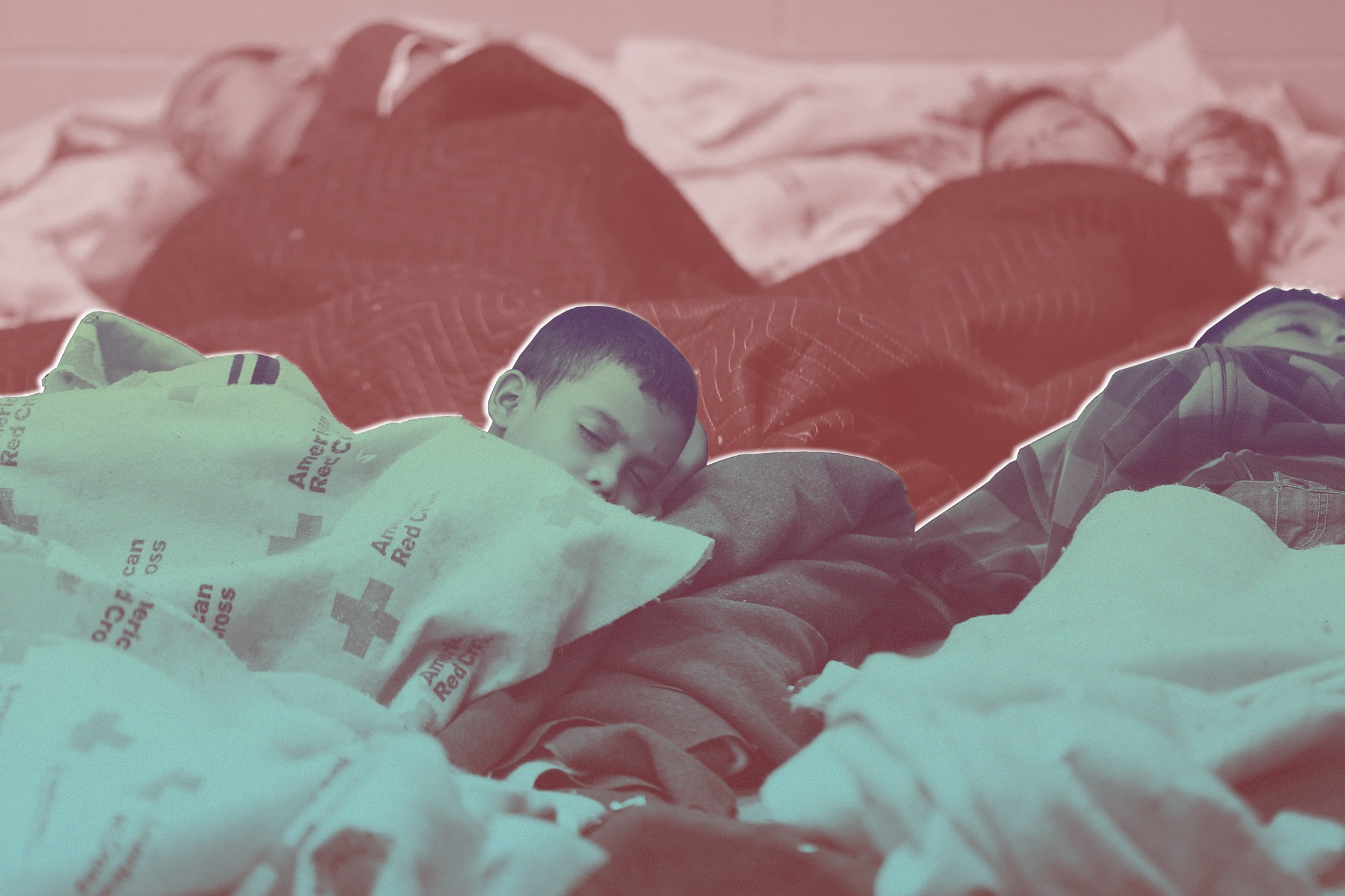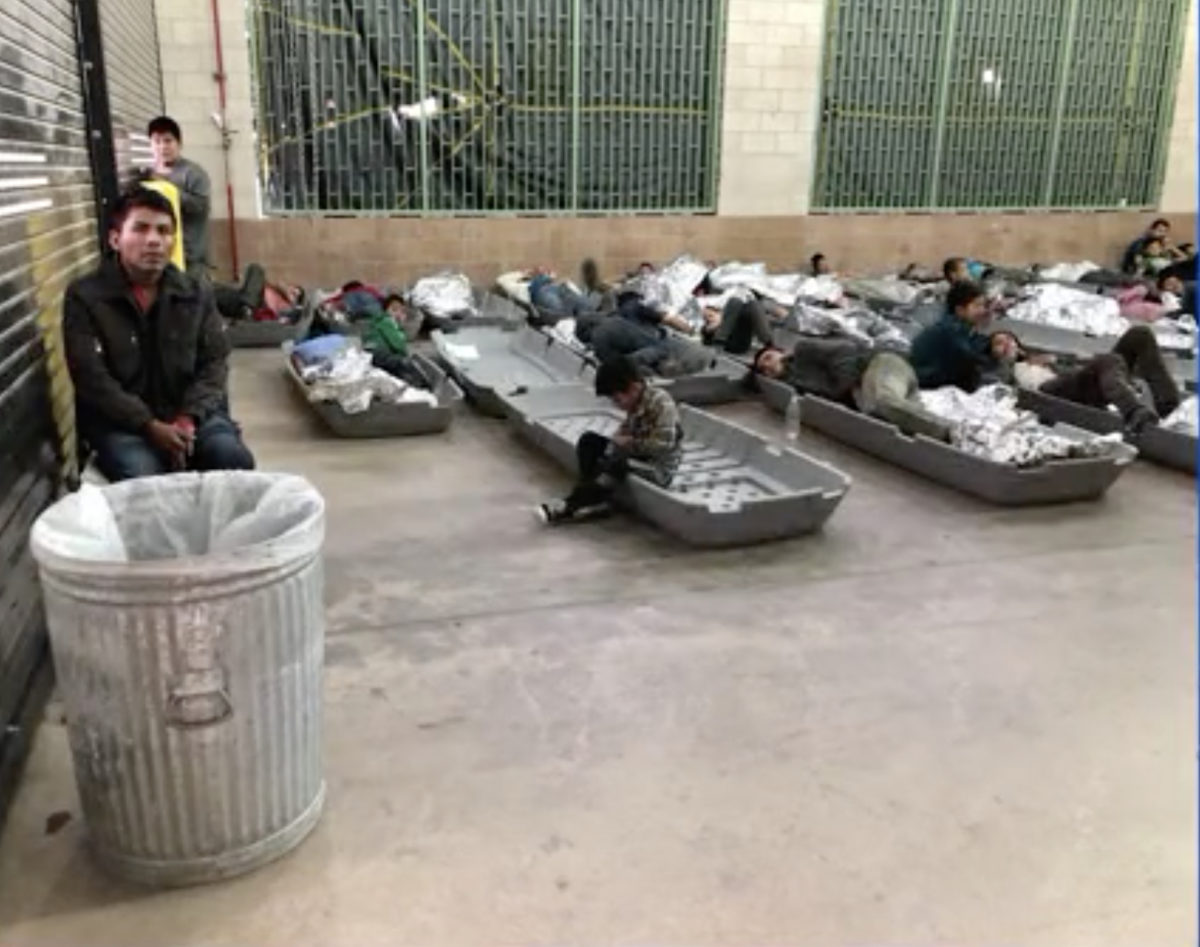Migrants Endure Brutal Conditions in Border Encampments
As they wait for permission to cross into the U.S., migrants, including children and infants, sleep on concrete and under plastic tarps, exposing them to cold, wind, rain, and illness.

On an early January weekend in Matamoros, Mexico, nighttime temperatures plunged into the 40s while about 75 migrants huddled in encampments near the bridges over the Rio Grande that provide entry into the United States. Nearby were Mexican guards and uniformed military officers, some wearing masks to conceal their identities. A plume of exhaust fumes and dust filled the air. Fifteen of the migrants were children, including a 9-year-old girl whose mother said she fled with her daughter from Honduras because the girl was raped there and the family feared repercussions from the rapist if they went to the police. There were also two 7-year-olds, a 6 year-old, a 3-year-old, a toddler, and an infant with a cleft palate. One child was coughing. Three had run fevers in past days, their parents reported.
“It’s a very dangerous place for kids’ health,” said Michael Seifert, an immigration policy analyst for the ACLU of Texas. Since May 2018, he has been trying since to assist migrant children and their families with bridge crossings into Brownsville, Texas. He said he recently encountered a 1-month-old girl in one camp. To obtain permission to cross her, Seifert and a humanitarian aid volunteer contacted the Customs and Border Protection (CBP) bridge supervisor and the Washington, D.C., office of Representative Filemon Vela, whose district includes the Brownsville area. After several hours permission finally came, and CBP agents waved the baby and her parents into the U.S.
Seifert and other activists have enabled such crossings for just a handful of children, who have all been either sick or very young. The rest are left behind. “We’re deciding who gets in and who doesn’t based on who you know and which lever you can pull,” Seifert said. “None of this has anything to do with policies or justice.” Seifert said. “It’s Sophie’s Choice.”
Deaths of Guatemalan children expose detention dangers
Conditions at the border became international news when 7-year-old Guatemalan migrant Jakelin Caal Maquin died on Dec. 8 after being in CBP custody for just a few hours. Maquin developed a fever of over 105 degrees, spent almost two hours with only rudimentary medical attention, lost consciousness, and died early the next day in Texas. The cause of her death is unknown; autopsy results are expected to be made public soon.
Another child, 8-year-old Guatemalan migrant Felipe Alonzo Gómez, died on Christmas Eve in New Mexico. Felipe was kept with his father and several other migrants for days in CBP lockup, even though the agency’s policy requires that migrants be released from its custody within 72 hours and transferred to ICE detention or released to friends or family in the U.S. But instead of releasing Felipe, CBP shuttled him from a Border Patrol office in El Paso, Texas, to one in Alamogordo, New Mexico, and then to the backrooms of a desolate highway checkpoint near the White Sands National Monument. By then five days had passed since Felipe and his father were detained. A postmortem exam determined that he had the flu, which he most likely contracted while in Border Patrol offices or at the checkpoint.
Before they cross into the U.S., asylum seekers often languish in jerry-built encampments in Mexican border cities like Matamoros just yards from international bridges. Two camps have sprung up just across from Brownsville and people living in them are desperate. Sleeping on concrete and under plastic tarps, they wait, sometimes for weeks or months, for permission to cross into the U.S. They don’t know when or if permission will come.
An immigration policy called “metering” that predates President Trump but was not enforced on the entire border until he took office, is responsible for the wait. It posts CBP officials atop the bridges to block migrants from crossing to port-of-entry buildings where they make their asylum claims. People from troubled countries used to walk freely to those buildings and apply for refugee status. But now only a handful are allowed each day. And days often pass when no one is let through. Many refugees become so frustrated that they abandon the camps and navigate the Rio Grande or hike to the U.S. overland. But others fear that such crossings will subject them to assault by Mexican gangs, drowning, death by dehydration—or criminal prosecution by the U.S. government if they make it across. So they stay at the bridges.
In 2017, Al Otro Lado, a California-based immigrants’ rights group, sued the Department of Homeland Security and Customs and Border Protection on behalf of several asylum seekers who have been stuck on bridges. The suit challenges metering as a violation of national and international laws that give refugees the right to freely enter other countries, including the U.S., to claim asylum. Last week, a judge suspended the suit because of the government shutdown. Meanwhile waiting migrants—including children—are exposed to heat, cold, wind, rain, thirst, hunger, dirt, crowding, anxiety, and violence.

8-year-old migrant held in space “no bigger than a bedroom” prior to his death
The White House has cited illness among child migrants and the deaths of Jakelin Caal Maquin and Felipe Alónzo Gomez as one reason the U.S. needs to build a border wall.
But it is the conditions in the encampments and highway checkpoints that heighten migrant suffering. A Border Patrol agent, speaking on the condition of anonymity, told The Appeal that the space where Felipe was kept at the New Mexico checkpoint was “no bigger than a bedroom” but since the fall of 2018 has been packed with migrants because of overcrowding at other CBP facilities. These backroom conditions, the agent said, are kept secret from the public. Enforcement of the metering policy has also meant that the U.S. government outsources the responsibility for detaining migrants to Mexico, whose camps at the bridges constitute additional deadly holding areas for children.
Back at the Matamoros encampments near Brownsville in early January, members of the group Acupuncturists Without Borders treated migrants by playing calming music and inserting needles into several people’s ears. “This will help with stress and trauma,” one of the acupuncturists said as those receiving the treatments slipped into a trancelike state. “It made me so relaxed,” said one mother. “The people who came showed us love. Afterwards I slept well for the first time in ages.”
About two days later, a rumor spread in the encampment that Mexican officials were poised to evict most of its residents. Incredulous, people asked what the logic for an eviction might be. A local humanitarian activist who has visited the encampments noted that Trump had just announced he would visit the border on Jan. 8 to make his case for the wall. Speculation was that the camps could prove embarrassing to him, especially the sight of the children sleeping under tarps.
The camps remained during Trump’s border visit, and they still had children in them. “I wish he would come” to the camps, said a migrant man from an African country. At that point, he had spent almost two months waiting to cross the international bridge, including weeks in a camp. “If Trump visited here,” he said, “I would tell him how much I want to contribute to his country. And how much he’s making us suffer as we wait.”
